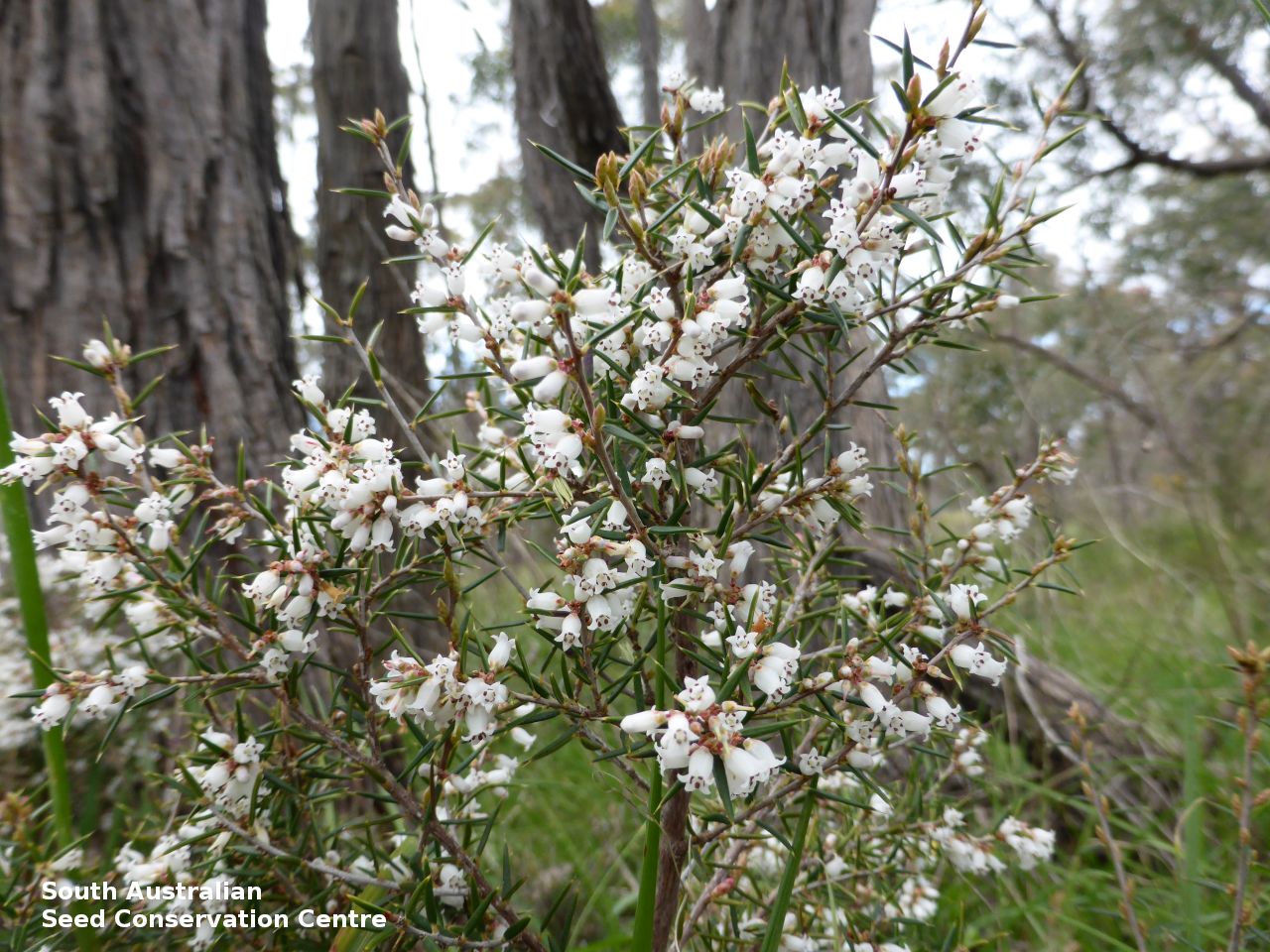
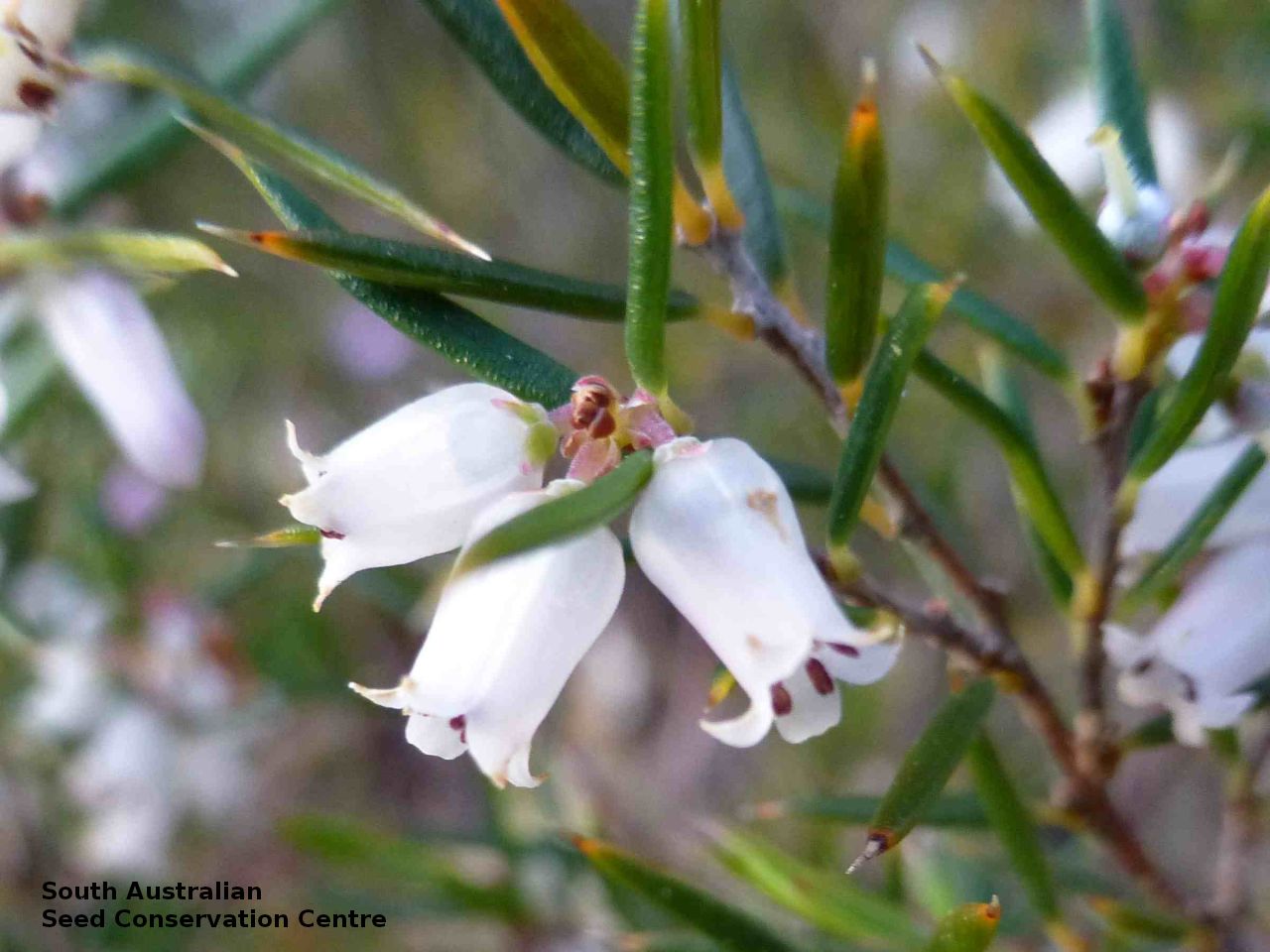
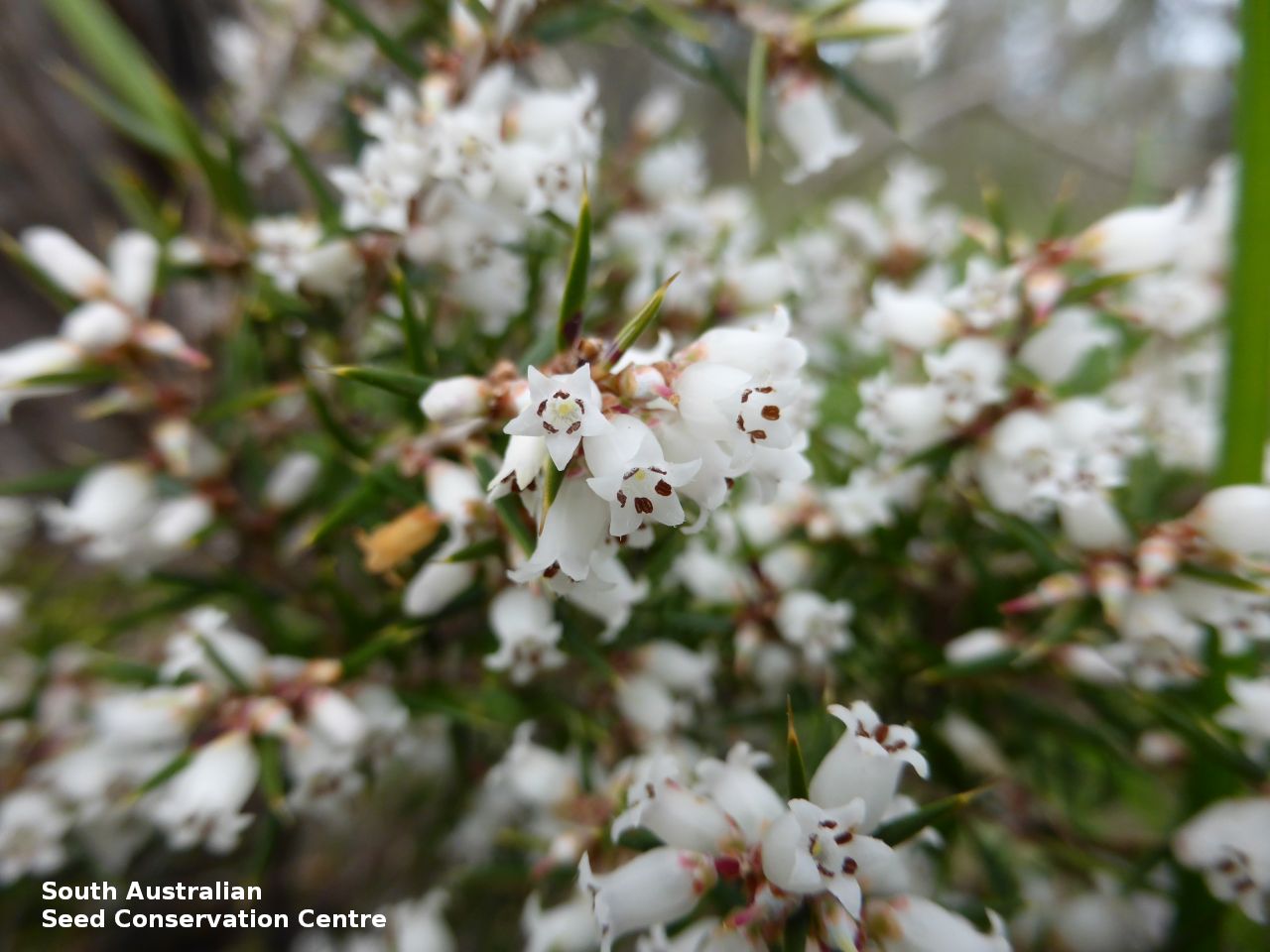
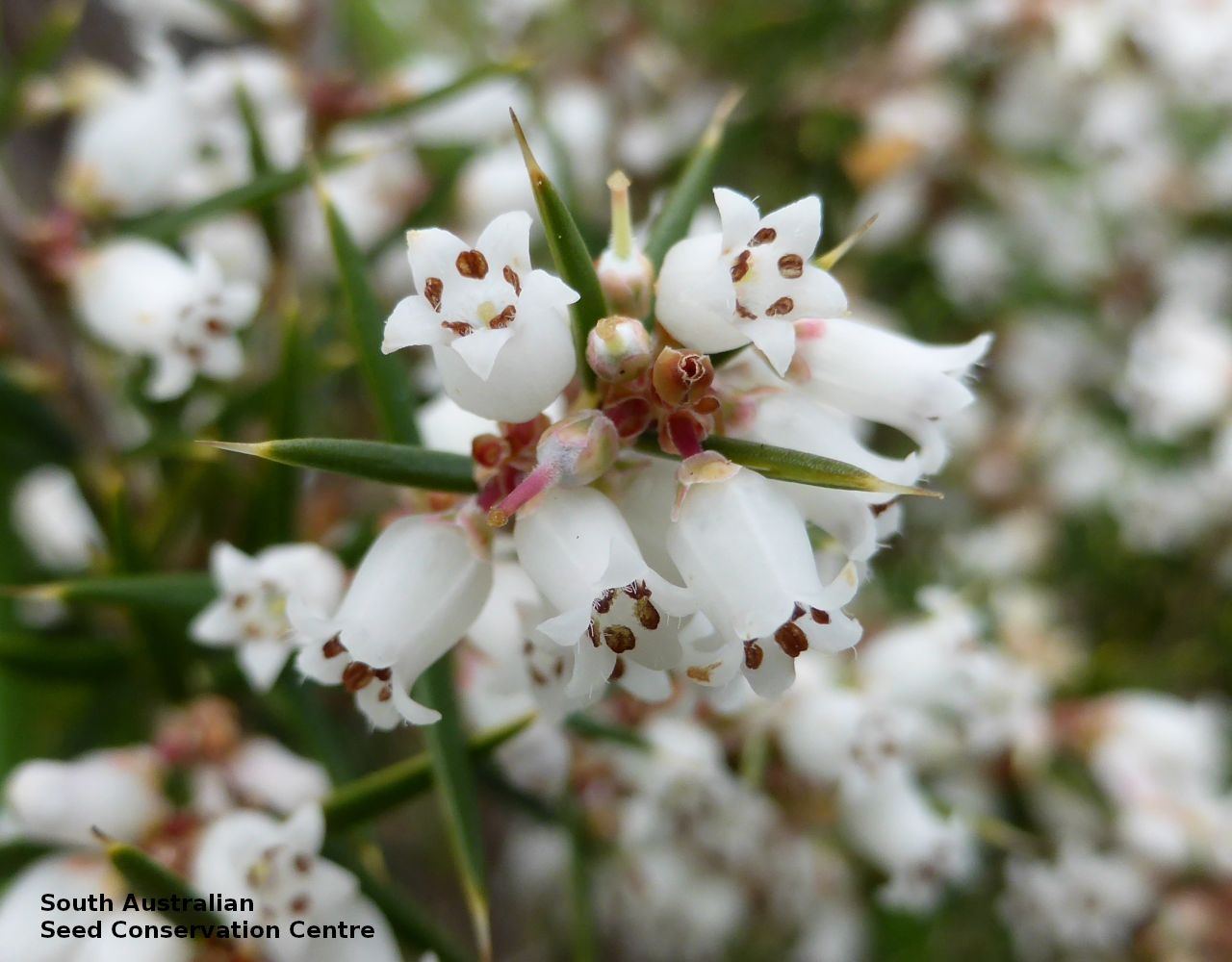
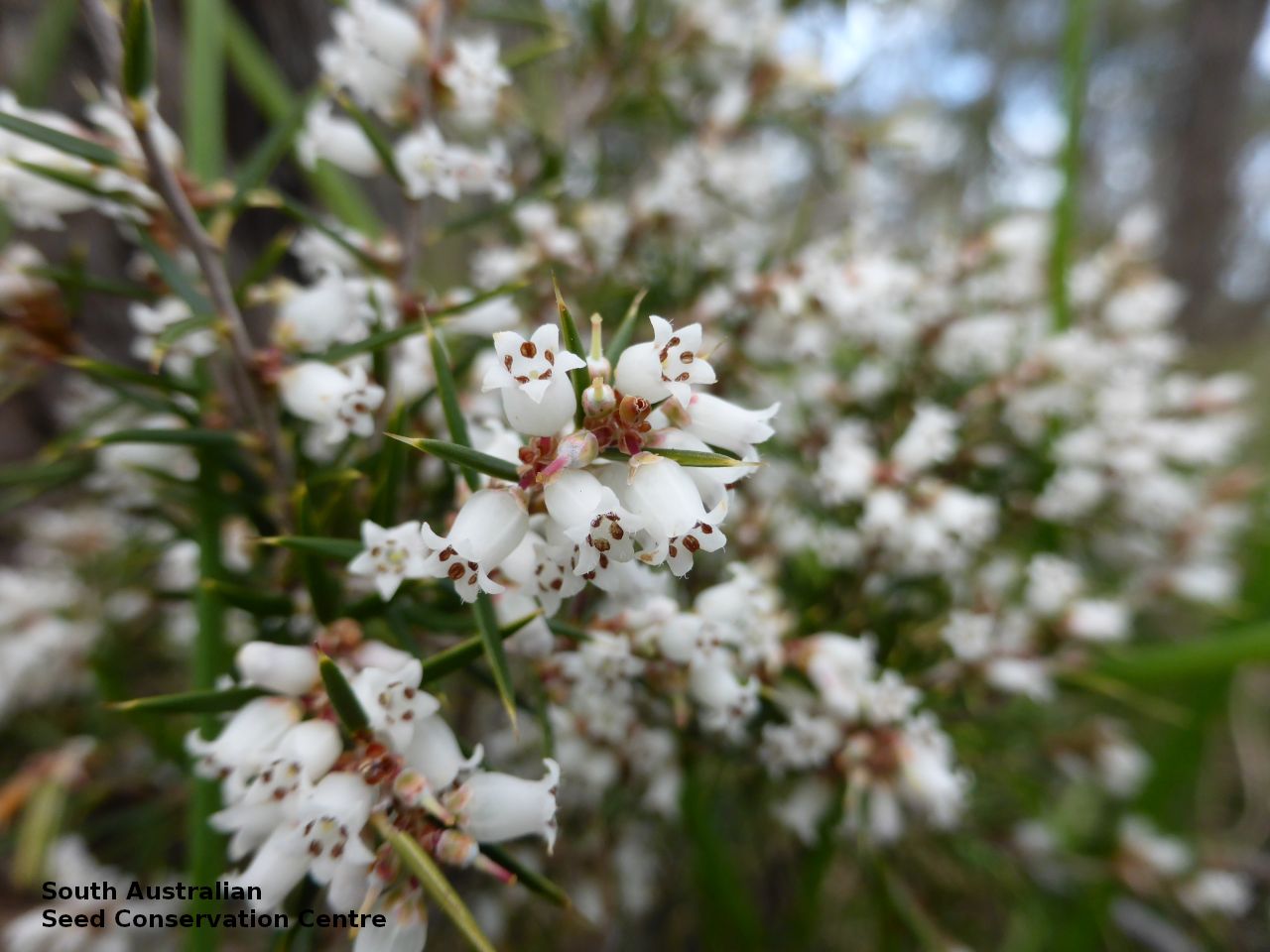
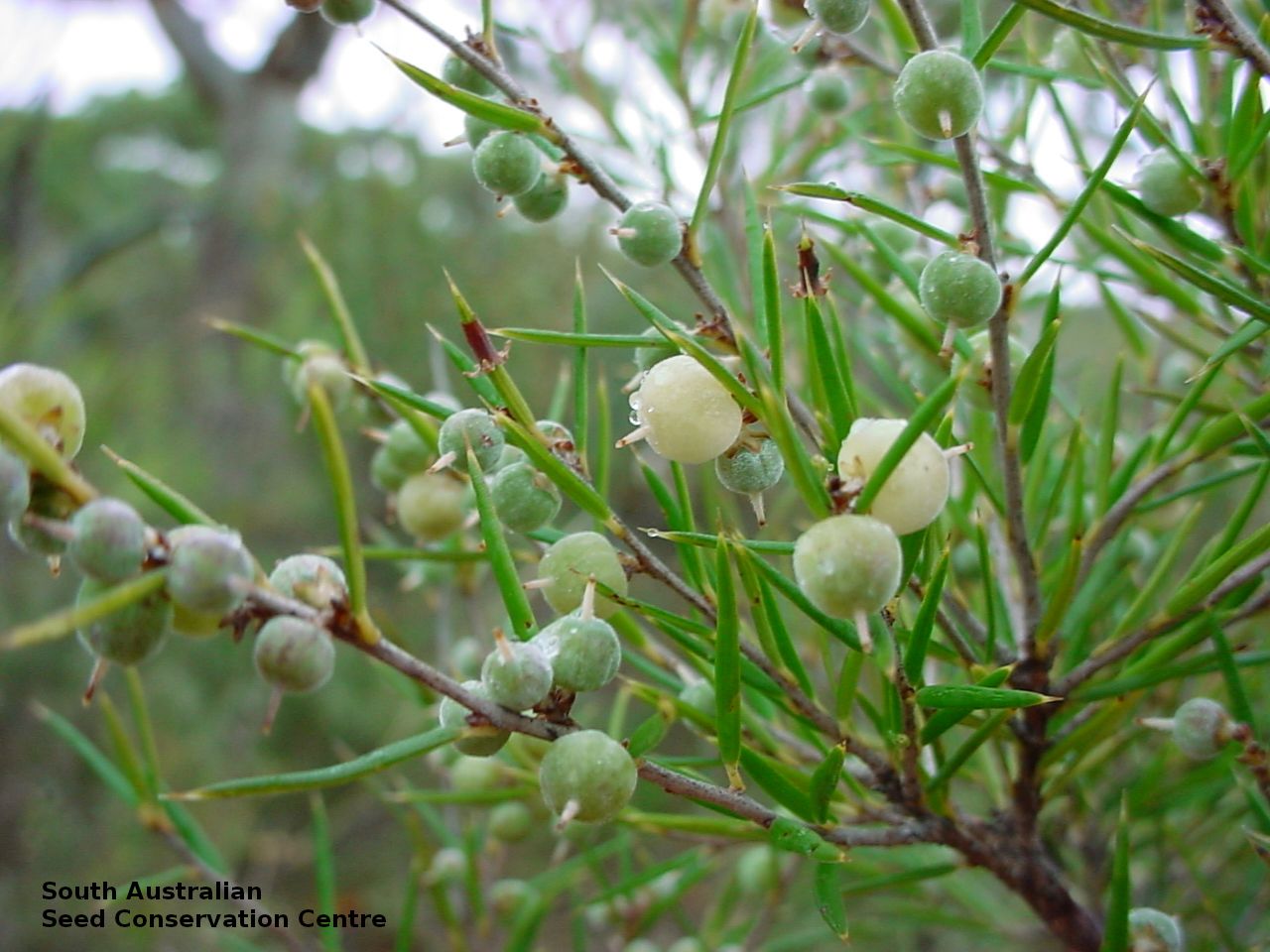
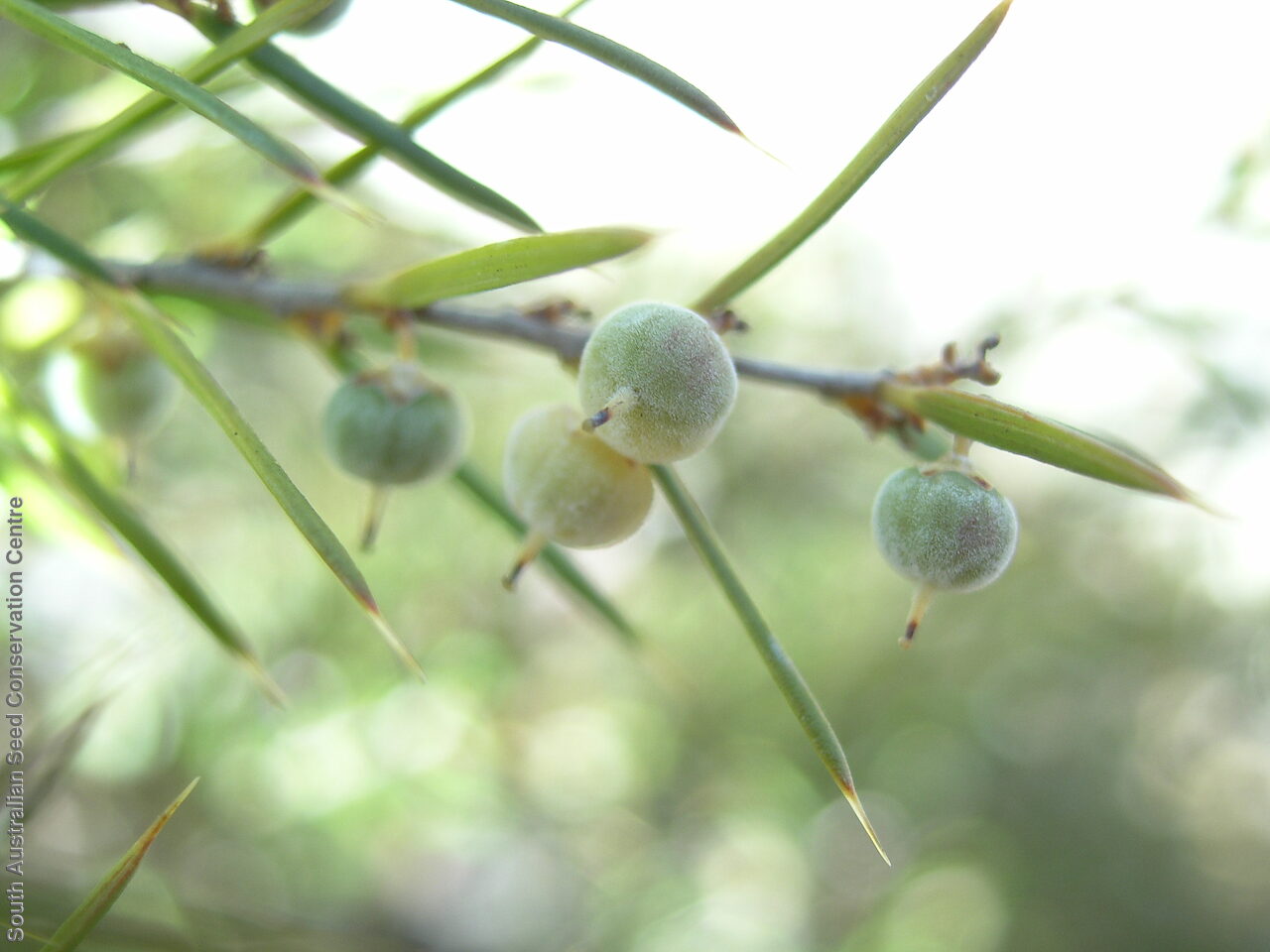
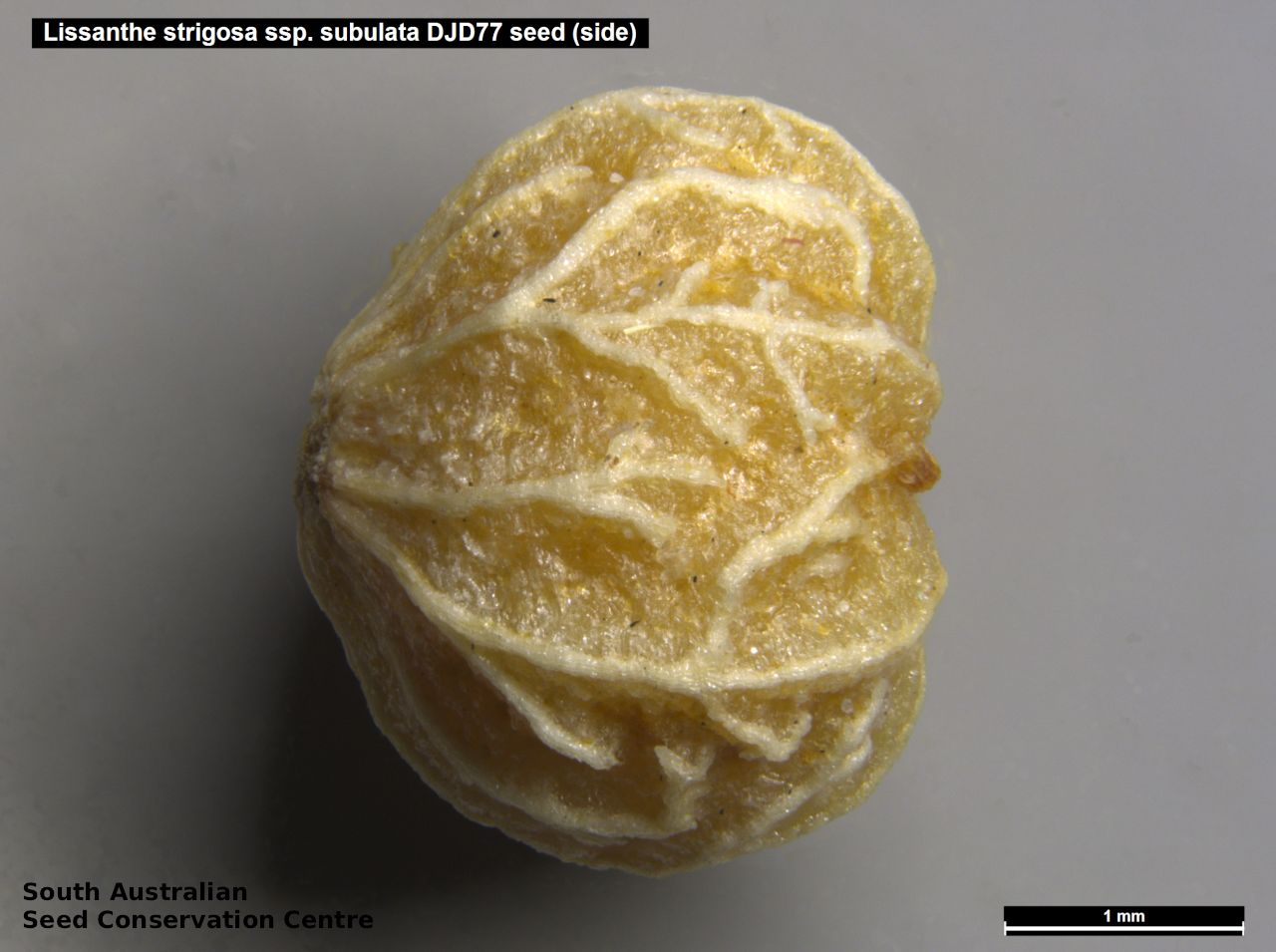
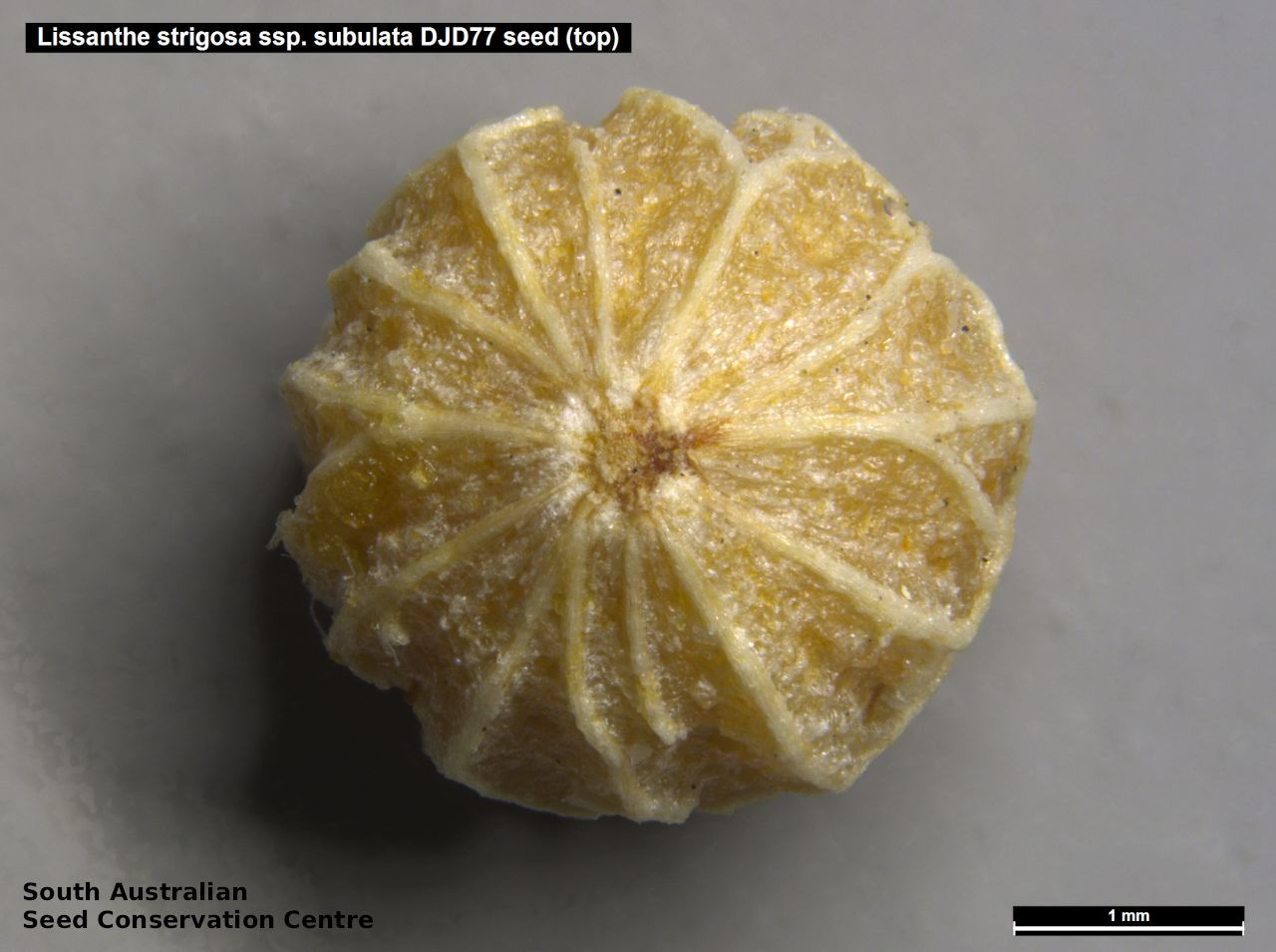
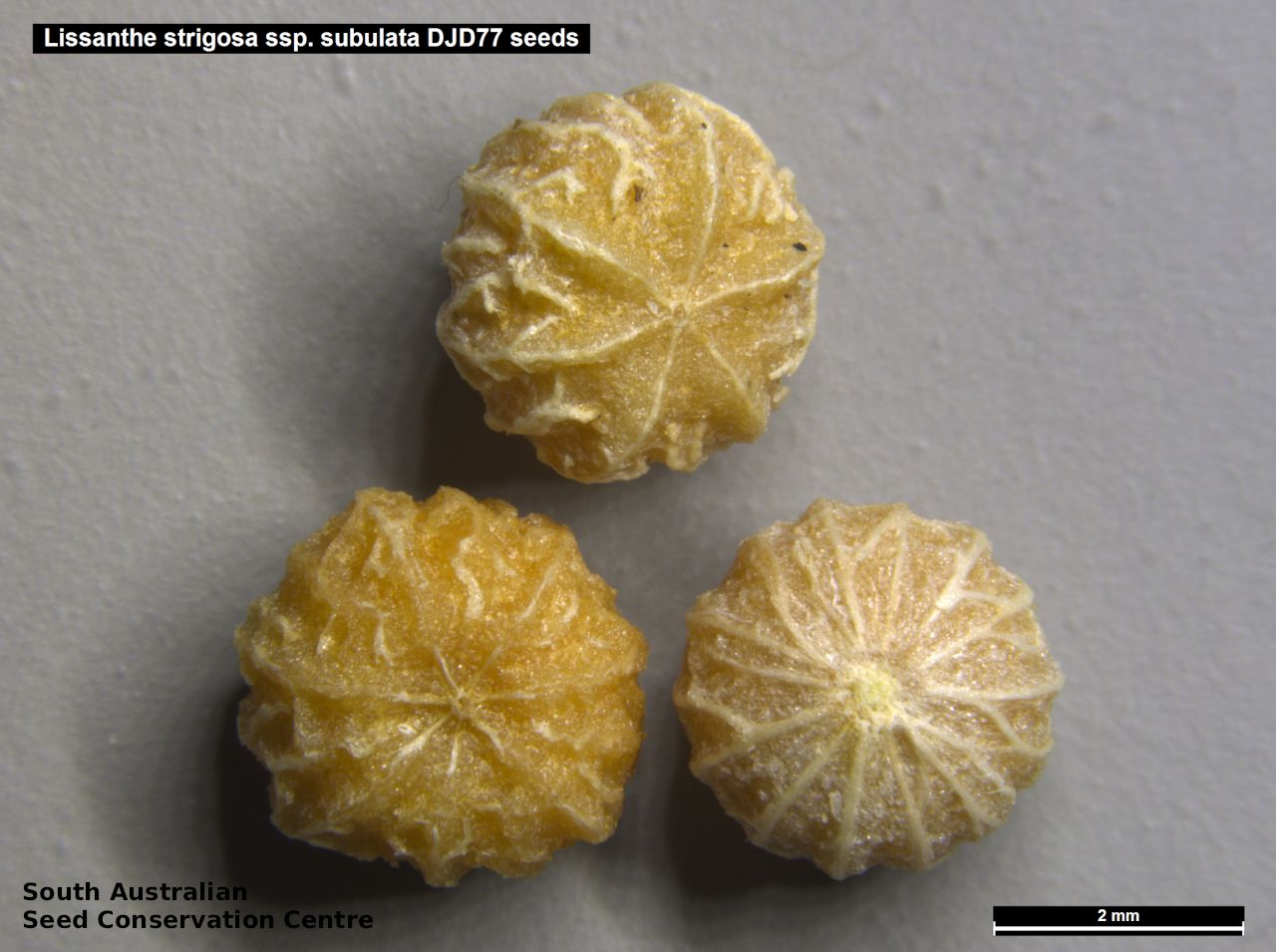
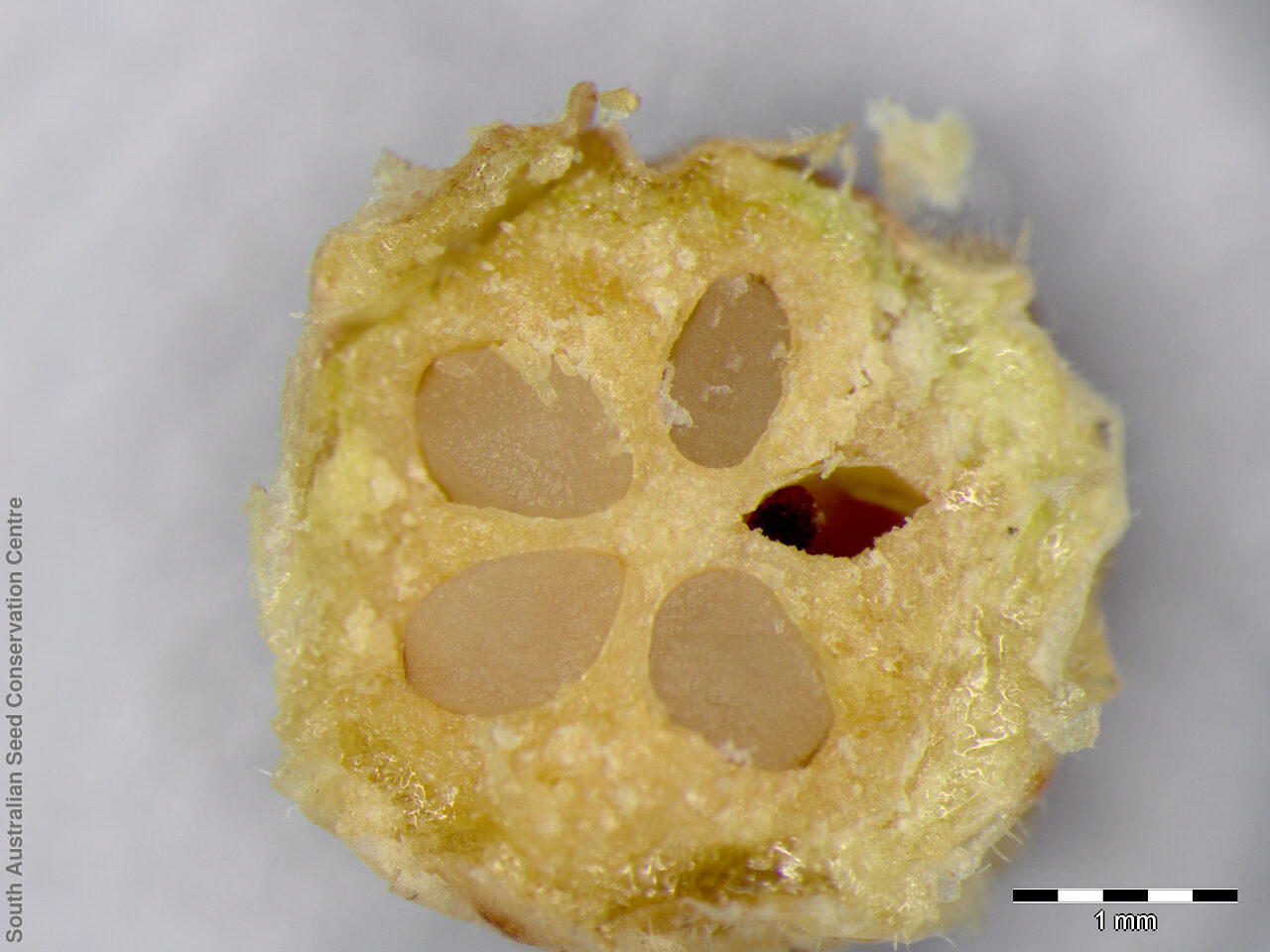

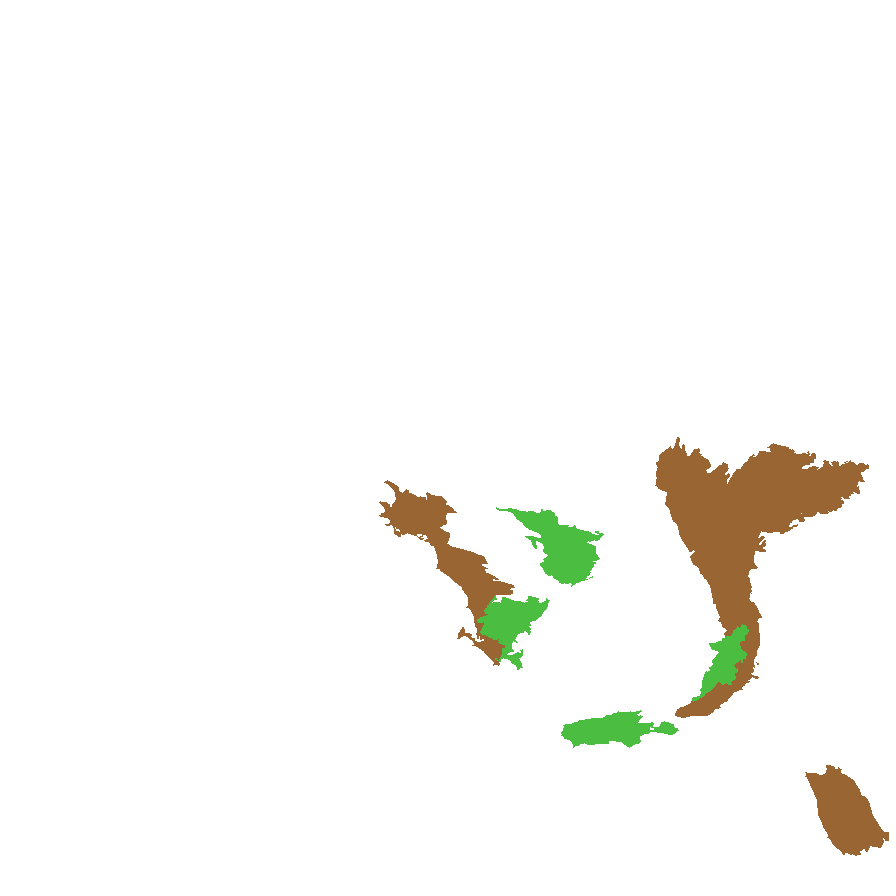
Botanical art
Prior names
Lissanthe subulata
Lissanthe strigosa
Etymology
Lissanthe, from the Greek 'lissos', meaning smooth and 'anthos', meaning flower, referring to the corolla lobes which are not bearded, as they are in the related genus Leucopogon. Strigos, from Latin meaning closely covered with pointed bristles. Subulata, from the Latin 'subulata,' meaning depressed; referring to the depressed-globose fruit.
Distribution and status
Found in the southern Flinders Ranges, southern Eyre Peninsula, Kangaroo Island, Mount Lofty Ranges and the South-east in South Australia growing in open forest, dry scrub and heathland, on sandy soils over basalt, sandstone and limestone. Also found in Queensland, New South Wales, Victoria and Tasmania. Native. Uncommon in South Australia. Common in the other States.
Herbarium regions: Eyre Peninsula, Northern Lofty, Murray, Southern Lofty, Kangaroo Island, South Eastern, Green Adelaide
NRM regions: Adelaide and Mount Lofty Ranges, Eyre Peninsula, Kangaroo Island, Northern and Yorke, South Australian Murray-Darling Basin, South East
AVH map: SA distribution map (external link)
Plant description
Much-branched, prickly and suckering shrub to 100 cm high, with hairy stems. Leaves ascending or spreading; linear-lanceolate to lanceolate, to 17 mm long and 2.0 mm wide; upper surface glabrous to hairy; lower surface whitish between the raised veins; margins smooth, slightly recurved. Inflorescence in short spikes of 3-4 white or pinkish, strongly-scented flowers. Flowering between August and November. Fruits are hairy, white depressed-globular fruit to 3.5 mm long and 4 mm wide, with a fleshy layer and woody endocarp with a number of sections, each with one seed. Seeds are soft, white longitudinal seed, within the woody endocarp. Seed embryo type is linear, underdeveloped.
Seed collection and propagation
Collect seeds between November and January. Collect individual fruit by hand when ripe, with a fleshy layer soft and a paler colour, or shake the bush to dislodge the ripe fruit. Check by cutting the woody endocarp in half, to see if locules are filled with seed.
The thin fleshy layer does not need to be cleaned off for storage. Leave it to dry for one to two weeks before storing with a desiccant such as dried silica beads or dry rice, in an air tight container in a cool and dry place. If you do want to clean the flesh off, then place the berries in a bucket of water and leave to soak overnight. Rub the flesh off by hand. Drain and wash again if required to remove all the fleshy parts. Then spread the wet seeds onto paper towels and leave to dry. Store the seeds with a desiccant such as dried silica beads or dry rice, in an air tight container in a cool and dry place. From one collection, the seed viability was high, at 90%. Seeds have morpho-physiological dormancy and will not germinate readily without treatment. Germination is enhanced by treating with fire cues, heat and smoke water, and gibberellic acid.
| Location | No. of seeds (weight grams) | Number of plants | Date collected | Collection number Collection location | Date stored | % Viability | Storage temperature |
|---|---|---|---|---|---|---|---|
| BGA MSB | 6,700 (146 g) 6,700 (146 g) | 100+ | 11-Jan-2005 | DJD77 Eyre Peninsula | 28-Mar-2006 | 90% | -18°C |
Number of plants: This is the number of plants from which the seeds were collected.
Collection location: The Herbarium of South Australia's region name.
% Viability: Percentage of filled healthy seeds determined by a cut test or x-ray.